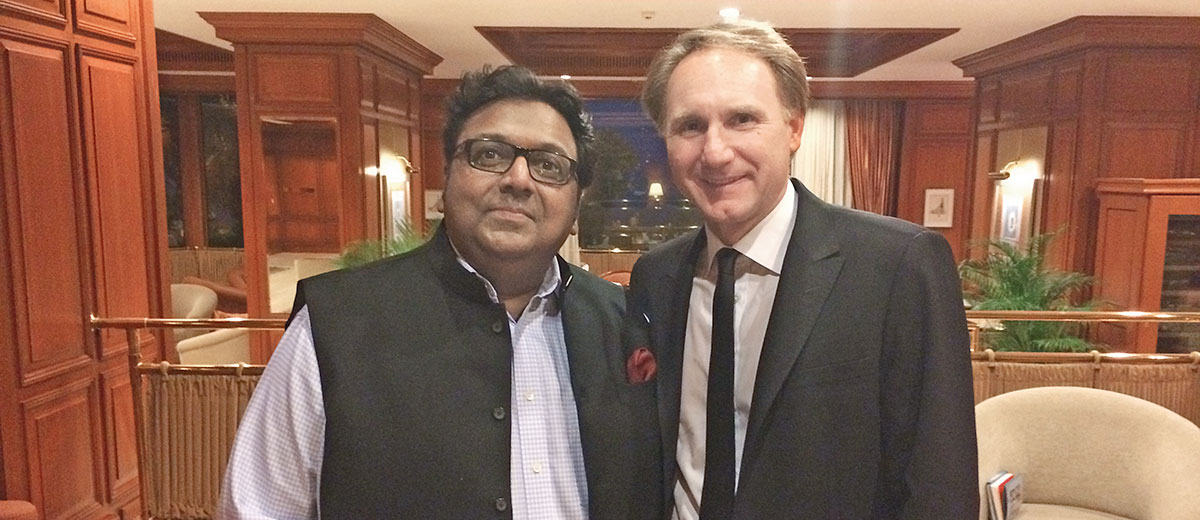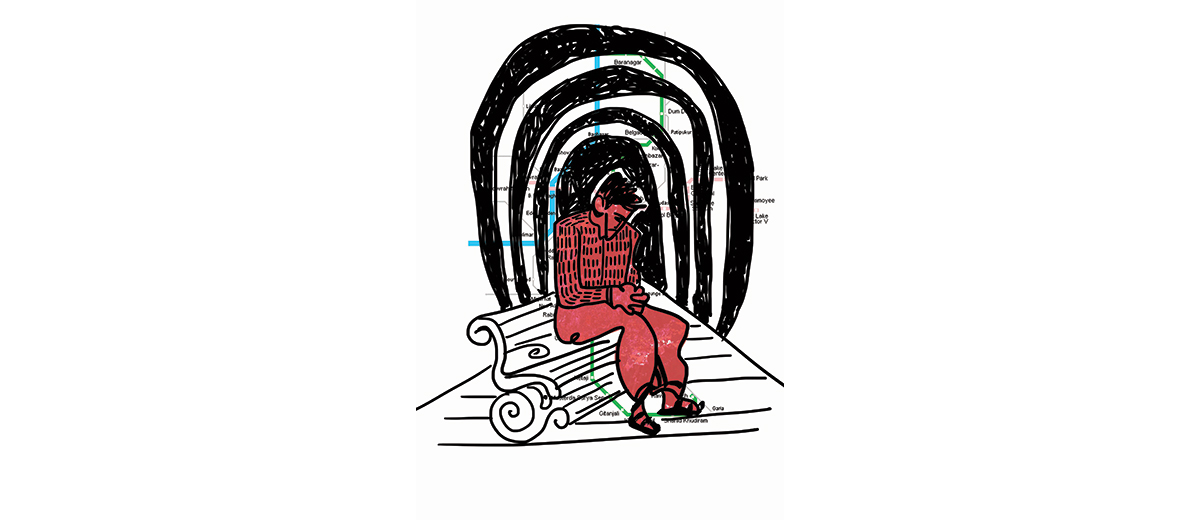
Contemporising Bridal Couture
Q. Tell us about your background and your early years.
I graduated in fashion design from National Institute of Fashion Technology (NIFT), Bengaluru, in 2002. My mother, Neeru Kanoi, was already designing women’s ethnic wear and participating in exhibitions. She introduced me to heirloom fabrics, weaves and intricate embroideries. Our basement at home served as my little design office, where we spent hours creating new looks and supplying to stores like Aza and Ogaan, and taking part in various exhibitions in Delhi, Mumbai, Bengaluru, Hyderabad, Jaipur, etc. Then we opened our boutique Sarvesi on Lansdowne in South Kolkata in 2004 and started retailing out of Fuel, Amara and Evoluzione as well.
Q. Do you think that bridal couture as a platform allows designers to experiment?
Bridal wear has evolved a lot in the last five years. In earlier times, brides, especially those from the Marwari community, were tied down by many restrictions. But now, they are less conventional—probably due to the increase in the number of working women in the community. Gaurav Gupta’s beautiful draped lehngas and Falguni & Shane Peacock’s creations are a few examples of how traditional attire is giving way to a more modern wedding ensemble with western accents. Today, the bridal market is riding a new wave, with destination or Bollywood/Hollywood-themed weddings giving designers a wider space to dream and innovate, which is why I chose to launch my label now.
Q. You are known for your elegant, delicate cuts and intricate designs. What is your USP?
 I have often been complimented for my colour sensibility and innovative use of embroidery. Surface ornamentation has also been a favourite of mine as I am enchanted with our crafts and try to tweak and contemporise them for the modern bride …We innovate in terms of embroidery techniques and by using different raw materials. For example, we have created saris by mixing wool embroiderery with gota. In this respect, we stand out as a New Age bridal label that seamlessly marries tradition with modernity.
I have often been complimented for my colour sensibility and innovative use of embroidery. Surface ornamentation has also been a favourite of mine as I am enchanted with our crafts and try to tweak and contemporise them for the modern bride …We innovate in terms of embroidery techniques and by using different raw materials. For example, we have created saris by mixing wool embroiderery with gota. In this respect, we stand out as a New Age bridal label that seamlessly marries tradition with modernity.
Q. Fashion weeks and e-portals are inundated with young Marwaris making their mark in contrast to gaudy shows of display that the community was earlier associated with. Do you feel that sensibilities have changed?
I personally never thought of Marwaris as blingy. I have always been surrounded by very elegantly dressed women but yes, generally, the larger section can go over the top. I really admire designers like Gaurav Gupta, Raakesh Agarvwal, Anamika Khanna and Shantanu Goenka. That more and more Marwaris are entering the business of fashion today is because the whole society is changing. The young Marwari woman knows what she wants and how to get it. She is better educated and more travelled …There has been a shift in thinking too, with fashion weeks opening up to newer designers. Furthermore, dressing up has become an important status symbol these days so Marwaris are queuing up to spend big bucks in order to look stylish.
Q. How do young Marwaris look at bridal fashion today?
The young Marwari bride is bold and experimental. She is fascinated with tradition as well as with cuts. With more and more girls going overseas to study, there has been a change in the mindset. An increasing number of multi-designer stores, Bollywood and media exposure have all contributed to a better fashion sense. Marwari brides now want glamorous memories of their wedding celebrations and the many parties held before the D-Day give them ample chance to wear a variety of styles and silhouettes.
Q. Why did it take you so long to come up with your store?
 Our store Sarvesi has been around for a decade, but it was small and quaint. We did not have a signage and we hardly ever did any publicity. All our customers were drawn by word of mouth. The new Sejal Kanoi store in the same spot is three times larger. I was never in a hurry to make it big, preferring a slow but steady journey instead. We took our time creating brand awareness, developing one-to-one relationships with cherished customers and focusing on details. As a design house, we are now ready for fashion weeks and expansion.
Our store Sarvesi has been around for a decade, but it was small and quaint. We did not have a signage and we hardly ever did any publicity. All our customers were drawn by word of mouth. The new Sejal Kanoi store in the same spot is three times larger. I was never in a hurry to make it big, preferring a slow but steady journey instead. We took our time creating brand awareness, developing one-to-one relationships with cherished customers and focusing on details. As a design house, we are now ready for fashion weeks and expansion.
Q. How has your Marwari heritage played a part in your fashion aesthetics?
My Marwari upbringing has played a big part in what I do. I have grown up seeing my mother wearing the prettiest French chiffons, patolas and Banarasis, with beautiful, intricate embroideries. I have also inherited a gorgeous brocade lehnga from my naani, which I have kept aside for my own wedding.
We belong to a traditional Marwari family. My great-grandfather, the late Sri Hanumanji Bux Kanoi, left behind a rich legacy of tea estates and many schools and colleges in Assam and Rajasthan. Thus, growing up in an aristocratic household, I learnt to respect old crafts, arts and music. My father, Rajeev Kanoi, has played a big role in developing my aesthetic sense and inculcating a taste for the finer things of life in me.
Having said that, over the years, I have also been greatly exposed a lot to western sensibilities, which I have tried to marry into my designs in a subtle way.
Q. Give us a few examples of how you have gone about “reviving ancient craft in temporary style”, as mentioned on your website?
We have used gota embroidery, which is traditionally done with gota patti, to create feather-light bridal wear. We have also tried to revive Parsi embroidery—also known as ghara embroidery—which is done with silk threads in solid colours. We have instead used tie-dyed cotton threads. So, even though the technique is the same ancient one, the resultant look is very different.
Q. What are this year’s bridal must-haves?
Every bride has her own unique taste. But as a designer, I feel that your wardrobe is incomplete without a traditional uppada sari with a zardozi-work bustier, long vintage standalone jackets, floor-length anarkalis with leheriya dupattas, adorned with gota embroidery, and a lehnga sari in net or chiffon.








